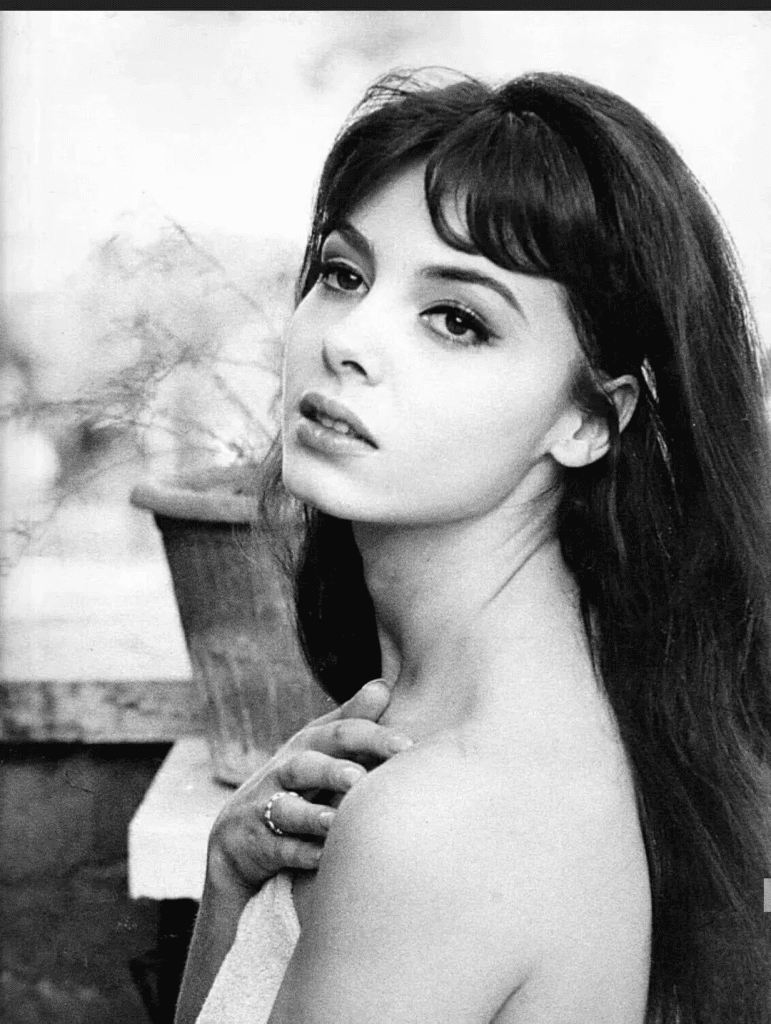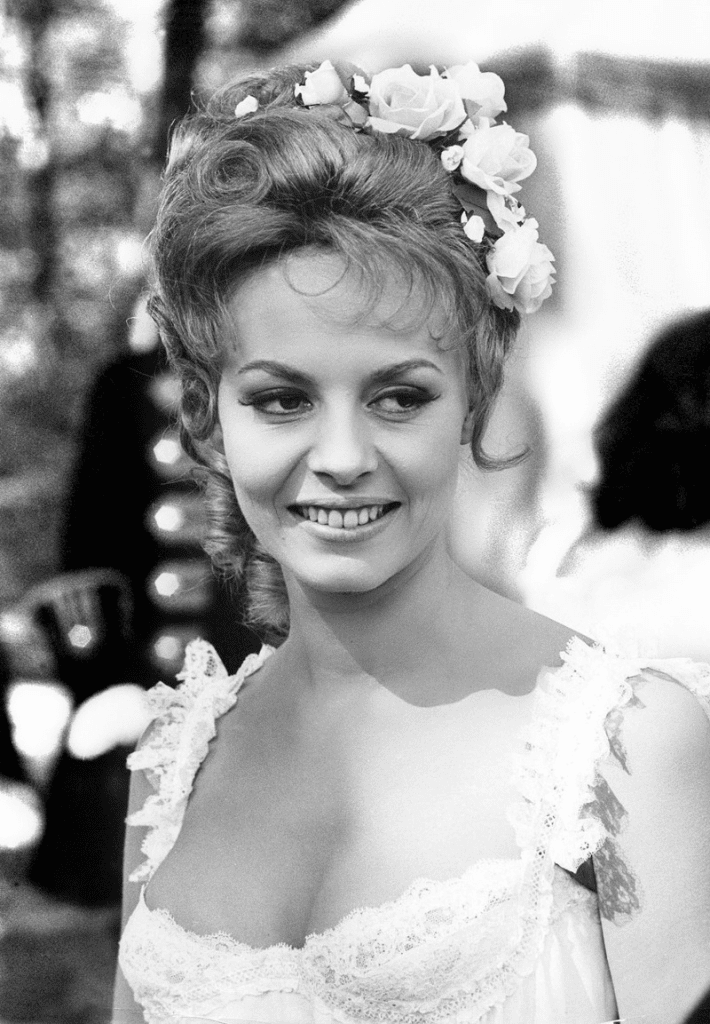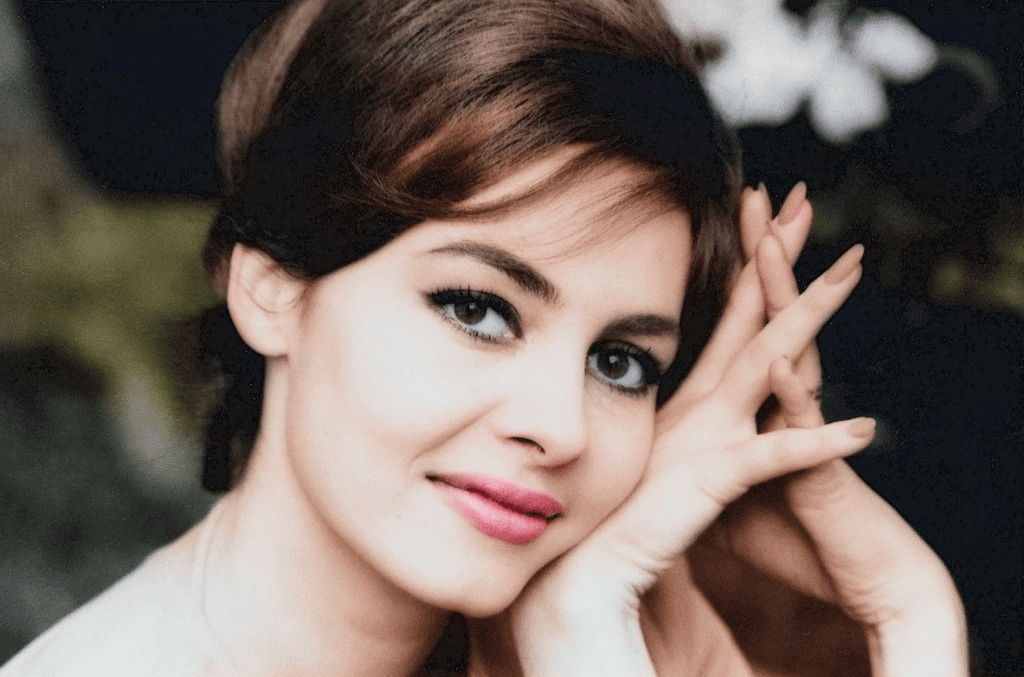The Rise of an Enchanting Muse
The 1960s brought a wave of unforgettable faces to the big screen, yet few left as lasting an impression as Michèle Mercier. With her delicate yet undeniably sensual beauty, she was more than just a starlet—she was a phenomenon. Audiences adored her not only for her charm but also for the depth she brought to every role. She became the heart of a historical-romantic saga that spanned five films, and through it, she carved her place as one of Europe’s most admired cinematic icons.

Early Life and Ballet Dreams
Born Jocelyne Yvonne Renée Mercier on January 1, 1939, in Nice, France, Michèle’s childhood was filled with Mediterranean light and Italian warmth from her maternal roots. At first, her parents hoped she would choose a practical path, but Michèle’s passion for movement led her to ballet. She trained rigorously, joining the corps de ballet at the Opéra in Paris. Yet while she excelled as a dancer, she felt an irresistible pull toward acting, a spark that would soon become destiny.

The loss of her younger sister, also named Michèle, left a mark on her heart. In tribute, Jocelyne adopted “Michèle” as her stage name, ensuring her sister’s memory lived on with every credit that appeared on screen.
Video : A Tribute to MICHÈLE MERCIER
First Steps into Cinema
Her acting debut arrived in the late 1950s with roles in French films such as Retour de manivelle and Shoot the Piano Player (1960) by François Truffaut. These early projects hinted at her potential, but Italy soon offered her broader opportunities. There she starred in romantic comedies and thrillers that showcased her playful yet magnetic presence.

By the early ’60s, Michèle Mercier was becoming a familiar name, working alongside celebrated actors like Jean Gabin and Robert Hossein. But the defining role that would make her an international star was just around the corner.

The Angelique Phenomenon
In 1964, Michèle was cast as Angélique, Marquise des Anges, in Bernard Borderie’s adaptation of Anne and Serge Golon’s bestselling novels. This was the moment everything changed. Brigitte Bardot famously declined the part, calling the heroine “too plain.” Michèle accepted it—and the rest is history.

The first film, Angélique, Marquise des Anges, was a runaway success. Audiences fell in love with her portrayal of the fiery noblewoman caught between love, adventure, and survival. Sequels followed quickly: Angélique: The Road to Versailles, Untamed Angelique, Angelique and the King, and Untouchable Angelique. Together, the saga of five films made her a household name across Europe and beyond.

Her cascading curls, expressive eyes, and fierce spirit brought Angélique to life in a way that resonated with millions. She wasn’t just a character—she was an icon of independence and passion during a transformative decade in cinema.

Challenges Beyond the Role
Yet, as dazzling as the Angelique series was, it also typecast her. Many directors struggled to see Michèle Mercier as anyone other than the Marquise. This limited her opportunities, despite her versatility and desire to explore deeper, more diverse roles.

She appeared in projects like A Golden Widow (1969), even collaborating with Serge Gainsbourg, and tried her luck in international productions. But Hollywood’s promises often ended in disappointment, leaving her to seek stability in Europe. Her personal life, too, saw turbulence—marriages that faltered and heartbreaks that tested her resilience.

A Career of Reinvention
Through the 1970s and 1980s, Michèle turned more toward theater, finding a new rhythm on stage while still taking occasional film roles. She later explored writing, penning candid memoirs such as I Am Not Angelique, where she reflected on the blessings and burdens of fame.

Her story was one of constant reinvention: a ballerina turned actress, a movie star turned writer, and ultimately a woman who found strength in her own narrative.
Video : Michele Mercier, the most beautiful woman in the world
Later Years and Quiet Strength
In later years, Michèle Mercier embraced a quieter life in Paris while still making selective public appearances. She became a mentor and an advocate, sharing her wisdom with younger generations of artists. Though financial troubles and personal losses crossed her path, she faced them with the same resilience that once defined her screen presence.

At 86 years old in 2025, she remains a symbol of the golden age of European cinema, admired not only for her beauty but for her enduring spirit.
Why Michèle Mercier Still Captivates Us
What makes Michèle Mercier unforgettable isn’t just her legendary role as Angélique, but the way she lived her life with courage and authenticity. She proved that beauty is more than appearance—it’s also strength, intelligence, and the ability to rise after every fall.

Her work introduced swashbuckling romance and daring heroines to a global audience, inspiring generations of filmmakers and fans alike. She was never just playing a part; she was embodying the dreams and struggles of women seeking both love and freedom.

Conclusion – The Eternal Flame of Michèle Mercier
Michèle Mercier’s journey from a ballet dancer in Nice to an international film star is a testament to ambition, artistry, and resilience. The Angelique saga gave her immortality in cinema, but her legacy goes far beyond one role. She represents the soul of European film in the 1960s: daring, elegant, and unafraid to break boundaries.

Even today, her name evokes images of romance, adventure, and timeless beauty. Michèle Mercier isn’t just remembered—she is celebrated as an eternal muse of cinema, a woman who turned life’s storms into a legacy that still shines on screens and in hearts around the world.